India is famous for its tigers, lions and leopards, but there’s so much more to our species diversity! Here's a list 10 species of Indian Small Cats.
The Harder-to-Spot Relatives of the Tiger
India is famous for its large cats: the tiger, the lion, and the leopard. The clouded leopard and snow leopard make up a part of this exalted collection too, with adventurers travelling to the far reaches of the country and rugged terrains to try and catch a glimpse of these elusive cats. What many people don’t know about are our small cats is that they are as much a part of the ecosystem as their larger (and more famous!) relatives.
Although our big cats and small cats share many similarities – from the shapes of their bodies to hunting by stealth – taxonomically, the large cats and small cats part ways at the subfamily level. Big cats belong to the subfamily Pantherinae, while the small cats belong to the subfamily Felinae. India has 10 species belonging to Felinae, with habitats ranging from high up in the snow-clad Himalayas to the deserts of Rajasthan and the jungles of the South. With no further ado, here are ten small cats of India.
Asian Golden Cat
(Catopuma temminicki)
IUCN status: Near Threatened
This cat resembles a smaller version of a puma, with its golden coat weighing around 8.5 to 15 kilograms. Its most distinguishing features are the white stripes that run around the inner linings of the eyes and broad moustache-like stripes on the cheeks. They are known to inhabit the sub-tropical forests of North-East India and can be found in Assam, Arunachal Pradesh, and Sikkim. They are usually terrestrial by habit and have brought down large prey including sheep and buffalo calves.

Hunting pressure and habitat loss account for the threats to Asian Golden Cats.
Asiatic Wildcat
(Felis silvestris)
IUCN status: Least concern
Similar in size to the domestic cat weighing about 3 to 4 kilograms, this cat sports a sandy coat with black spots and whitish underparts. It has two black markings on both cheeks and inner forelimbs. They can be found in the dry regions of Rajasthan and Gujarat, and some parts of Maharashtra and Madhya Pradesh. Interestingly, it inhabits burrow systems.
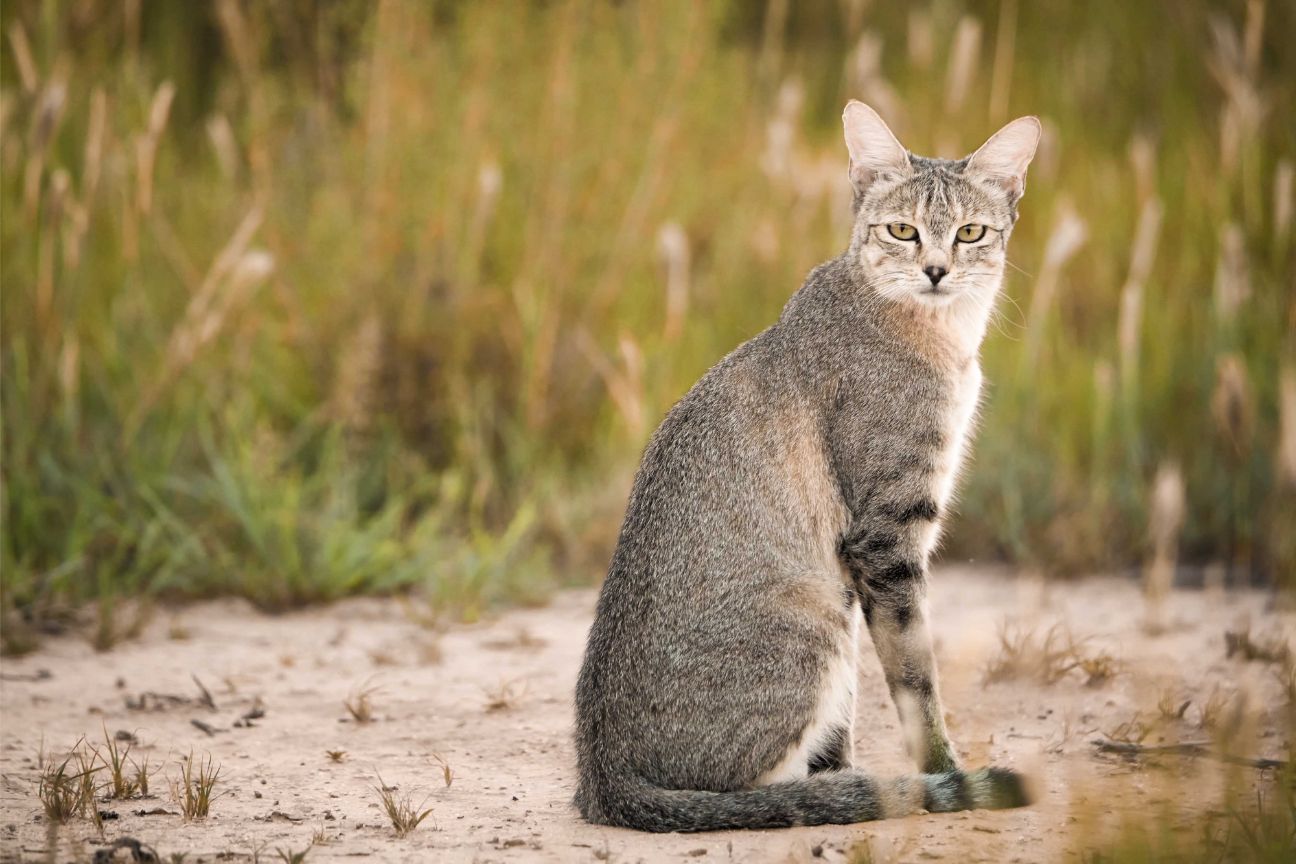
The Asiatic Wildcat is a subspecies of the African Wildcat.
Caracal
(Caracal caracal)
IUCN status: Least concern
The caracal is the only small cat we have with a solid coat other than the golden cat. Weighing in at approximately 6 kilograms, this cat features the tufted ears that are synonymous with the lynx. It can be found in the semi-arid areas of Punjab, Haryana, Rajasthan, Gujarat and Madhya Pradesh. It is extremely agile and relies on this ability and speed to hunt down its prey.
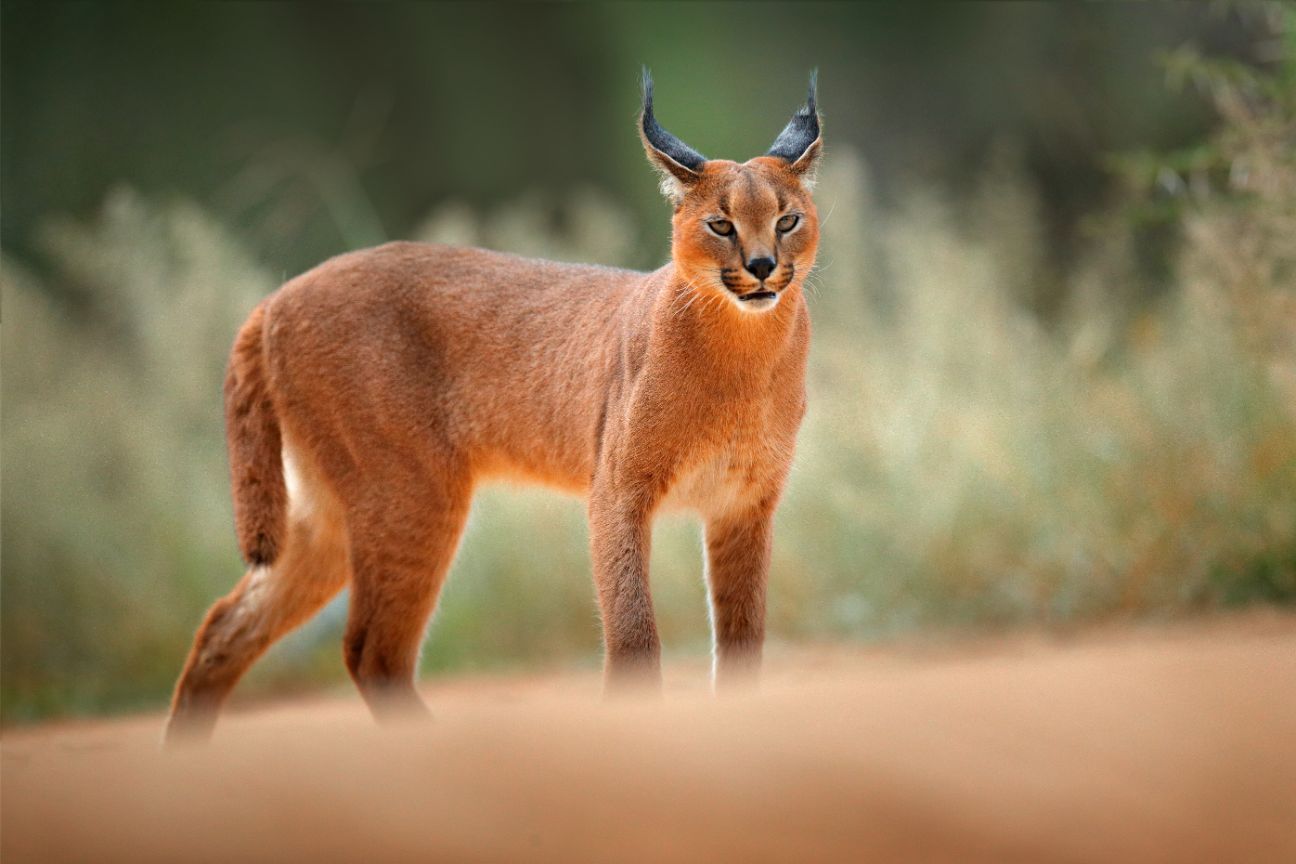
Shea-Gosh, Siyah-Gush, Hornotro, and Junglee Bilao are some monikers of the Caracal.
Eurasian Lynx:
(Lynx lynx)
IUCN status: Least concern
Much heavier than the caracal, weighing in around 15 to 29 kilograms, the Eurasian lynx features long, black tufts at the tip of its ears with a buff or sandy grey coat. They aren’t common in India but can be found in the upper Indus regions of Jammu and Kashmir, Ladakh and Sikkim. They have been reported in the rocky areas above the tree line in the Himalayas and are known to breed once a year for a span of two or three years, skip a year, and then start again.
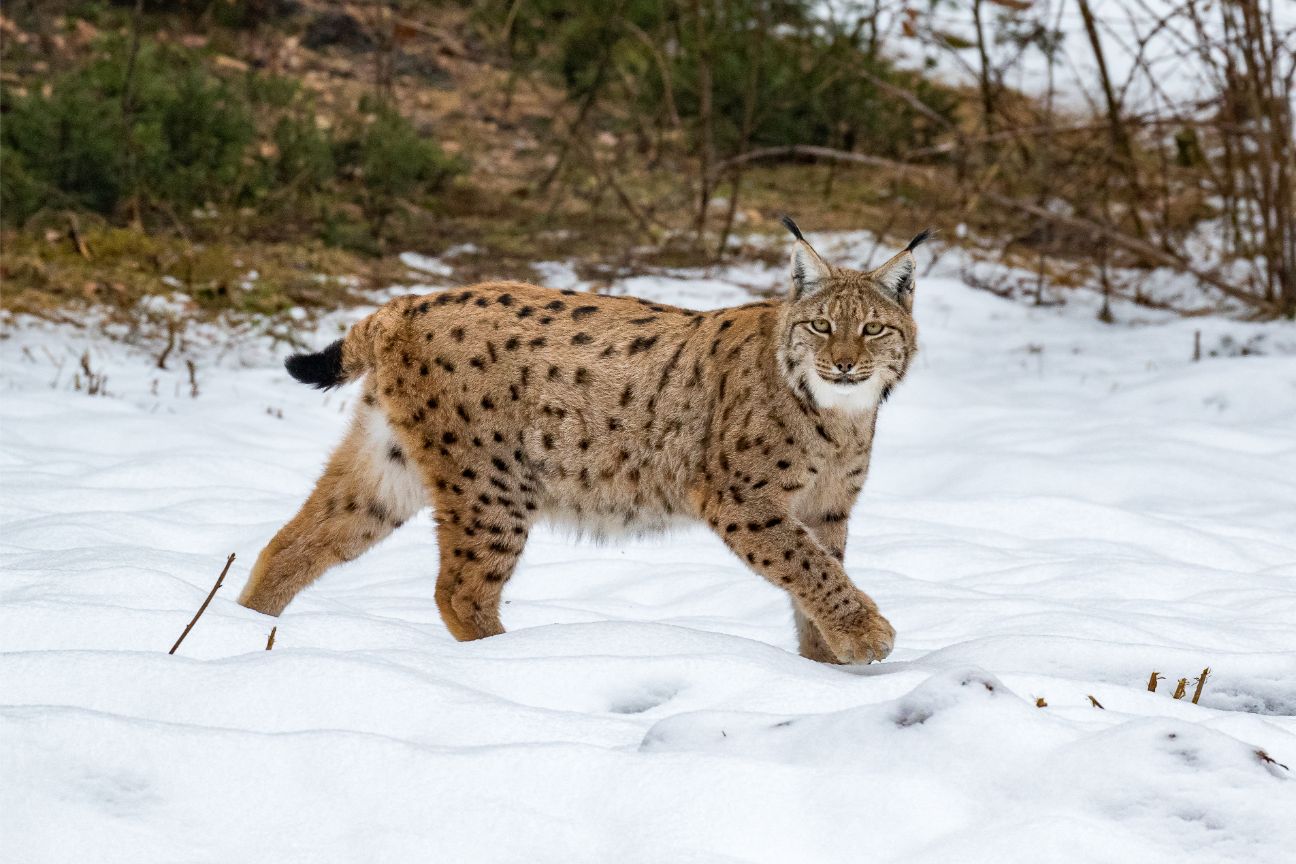
In Europe, the Eurasian Lynx has bounced back from the brink of extinction but is still critically endangered in some areas.
Fishing Cat
(Prionailurus viverrinus)
IUCN status: Vulnerable
Mainly found in wetlands and marshes, this easily recognisable cat has a spotted olive-grey coat and can weigh in at up to 16 kilograms. It suffers from rampant killing in parts of its range in Eastern India. This curious cat has partially webbed feet and preys on fish and waterfowl. It is best seen at Keoladeo Ghana National Park in Rajasthan.
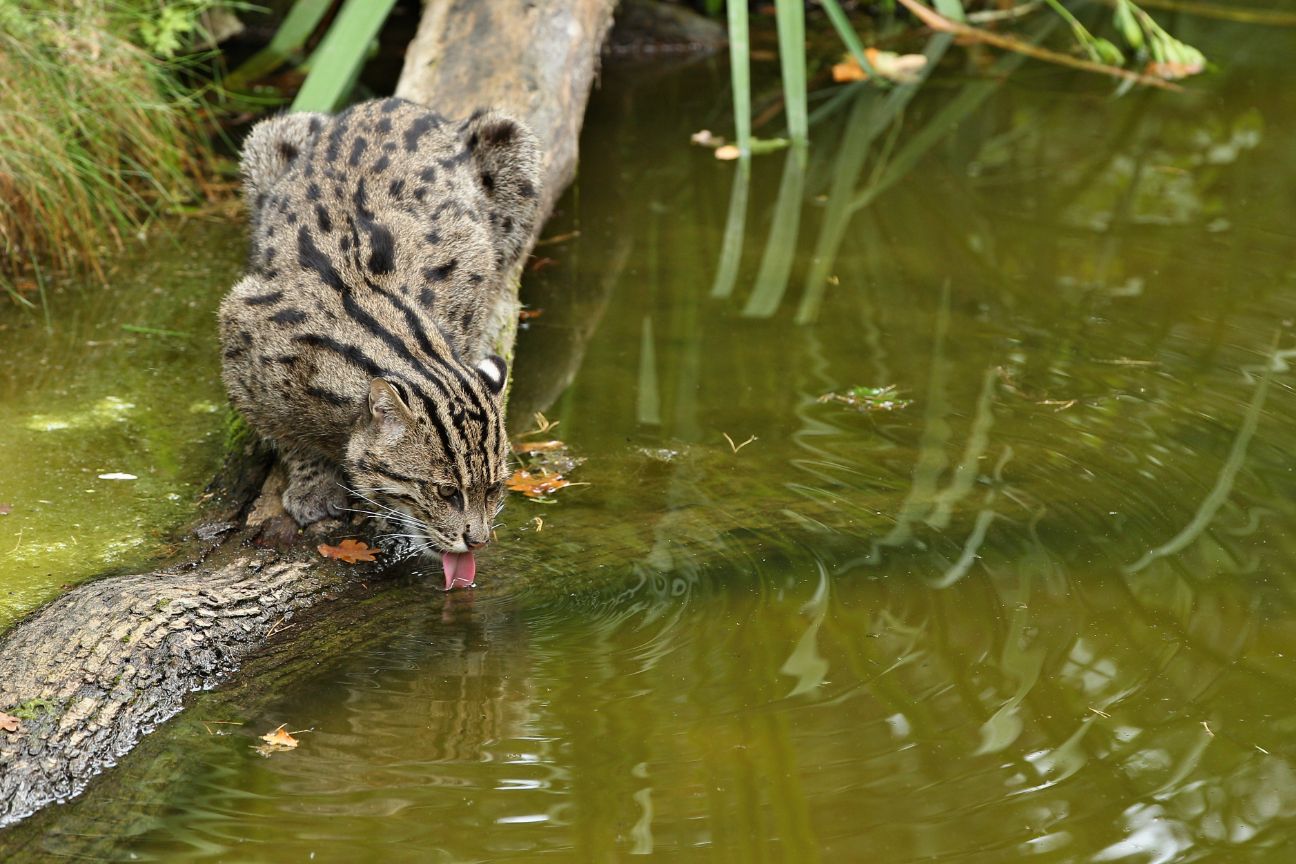
Destruction of wetlands is severely affecting the Fishing Cat population.
Jungle Cat
(Felis chaus)
IUCN status: Least concern
This small cat is widely distributed across the Indian subcontinent in several habitats, and has four subspecies. They are varied in size, with females weighing between 2.5 to 9 kilograms and males being larger at 5 to 12 kilograms. The colour of their coats varies from buff to a grey-brown with light red stripes running across the forehead and inner forelegs. The ears are tipped with small black tufts. They have been known to hunt prey larger than themselves like porcupines and fawns, but also feed on lizards, mice and frogs.

The Jungle Cat is also known as the Reed Cat or Swamp Cat.
Leopard Cat
(Prionailurus bengalensis)
IUCN status: Least concern
The simplest way to describe their appearance is “miniature leopard”. However, unlike leopards’ rosettes, the Leopard Cat’s spots are solid. These cats are the most common small cat in India after the Jungle Cat. These cats inhabit scrublands, moist deciduous forests, and grasslands. They are typically arboreal but also comfortable in water. In India, you can find them through the Himalayas and Terai region, in the North-East and in parts of the Western Ghats.
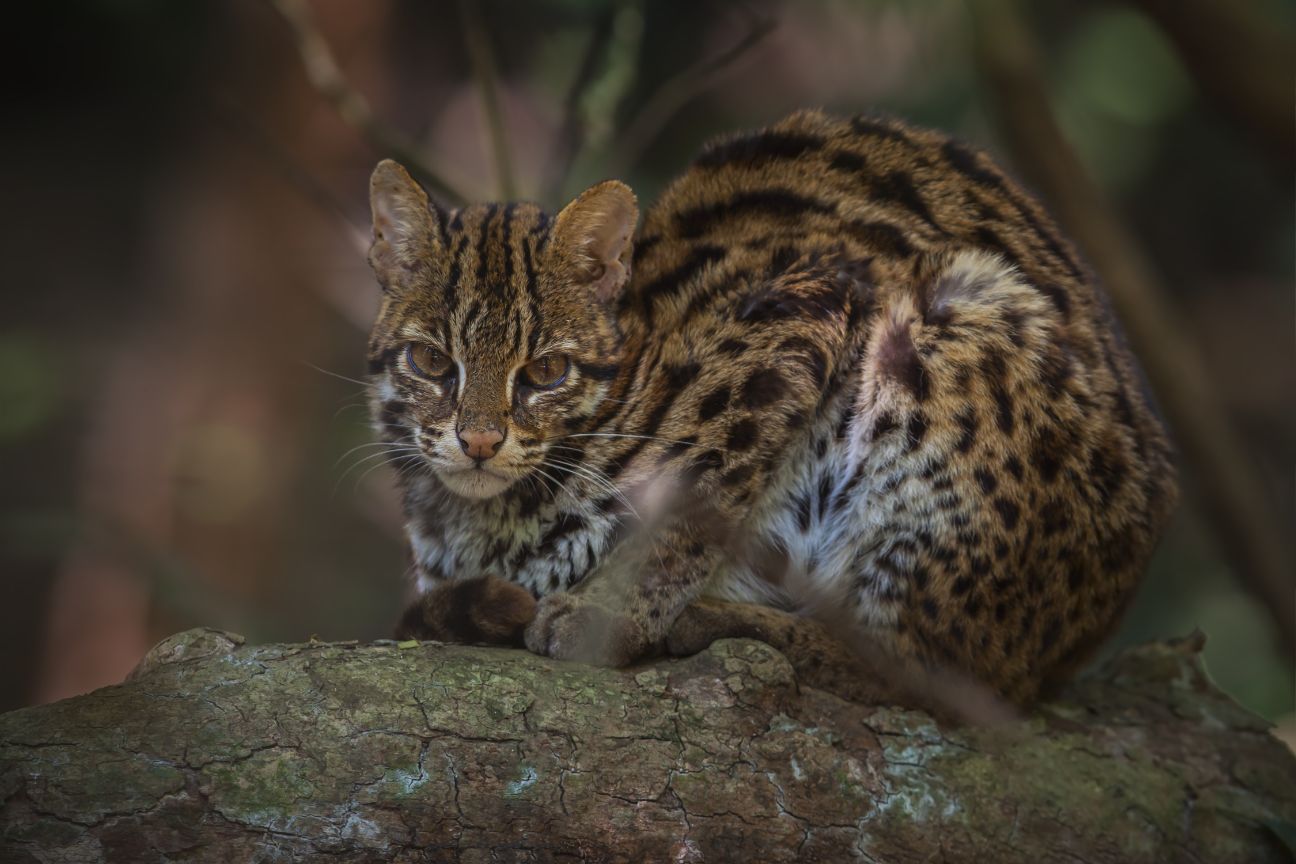
Caption: Interestingly, Leopard Cats produce a similar range of vocalisations to the domestic cat.
Marbled Cat:
(Pardofelis marmorata)
IUCN status: Near threatened
The Marbled Cats’ patterns resemble those of the Clouded Leopard, but they weigh about a third of the latter (between 2 to 5 kilograms). Additionally, the patches on their coats vary with pale borders instead of the black ones found in Clouded Leopards. Their tails are as long as their bodies, which bear several black spots, as do their legs. Their coats are usually brownish yellow but may have reddish or greyish overtones. Since they are arboreal in nature, a large part of their diets consists of birds. However, they aren’t averse to small mammals as well. You can find them in the North-East of India.
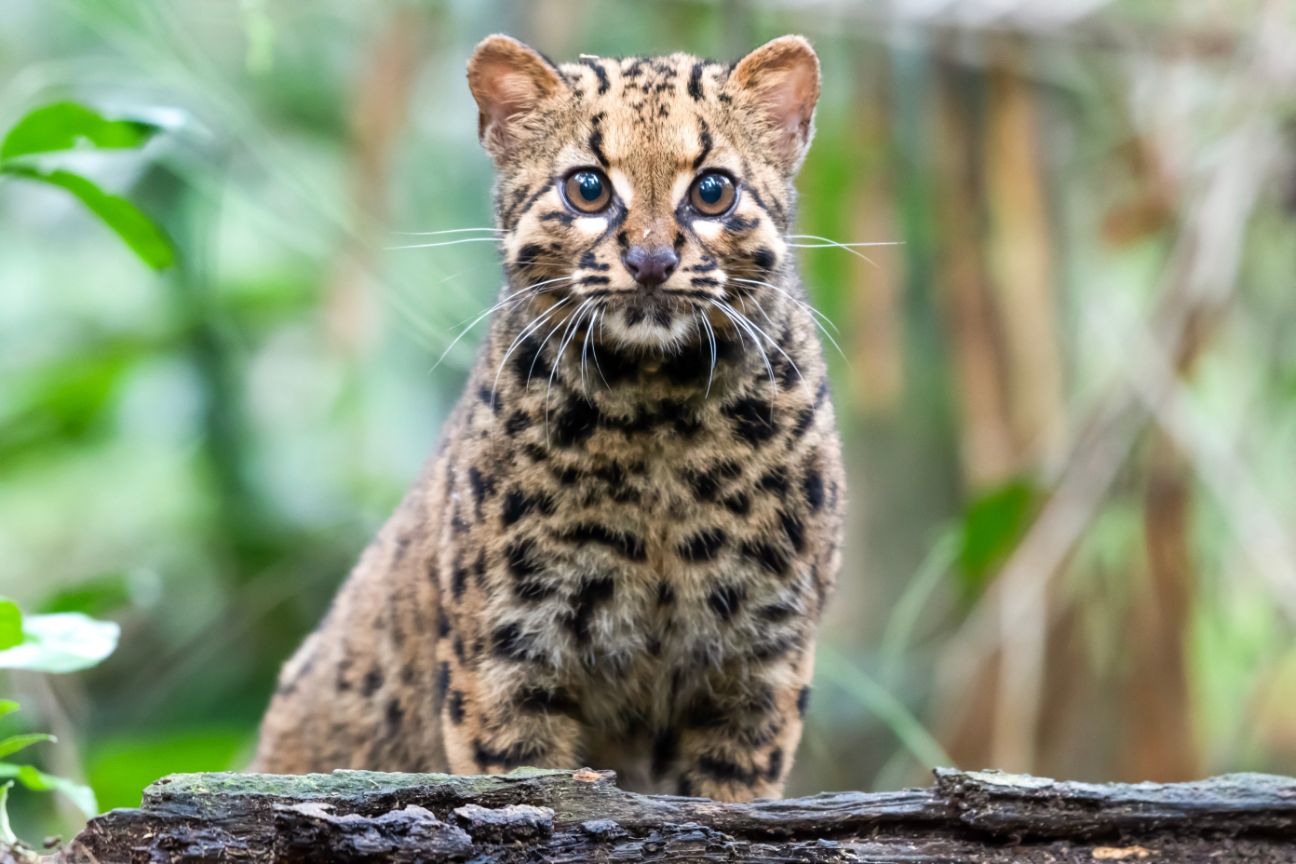
The Marbled Cat is closely related to the Asian Golden Cat and the Bay Cat.
Pallas’s Cat
(Otocolobus manul)
IUCN status: Near threatened
This little cat inhabits the rugged, rock-strewn mountain steppes of Ladakh and the Tsa Lhamo region of Sikkim. Its greyish coat with white tips gives it a frosted look, and its short rounded ears and flat head aid in camouflage while hunting. Not much is known about these cats, partly because of the difficult terrain they inhabit.

Owing to its appearance, the Pallas’s Cat is fondly referred to as ‘The Original Grumpy Cat’.
Rusty-Spotted Cat
(Prionailurus rubiginosus)
IUCN status: Near threatened
This cat, the smallest of all the wildcats in the world, weighs its heaviest at 1.6 kilograms. As its name suggests, its coat features small rust-coloured spots arranged in neat rows on its back, head, and sides. Its eyes are ringed with white, along with white undersides that may be marked with faint spots. It inhabits rocky areas and open forests, and has been known to live quite close to human inhabitation. It can be found in Southern and Central India, with its northernmost record in the Sariska Tiger Reserve.
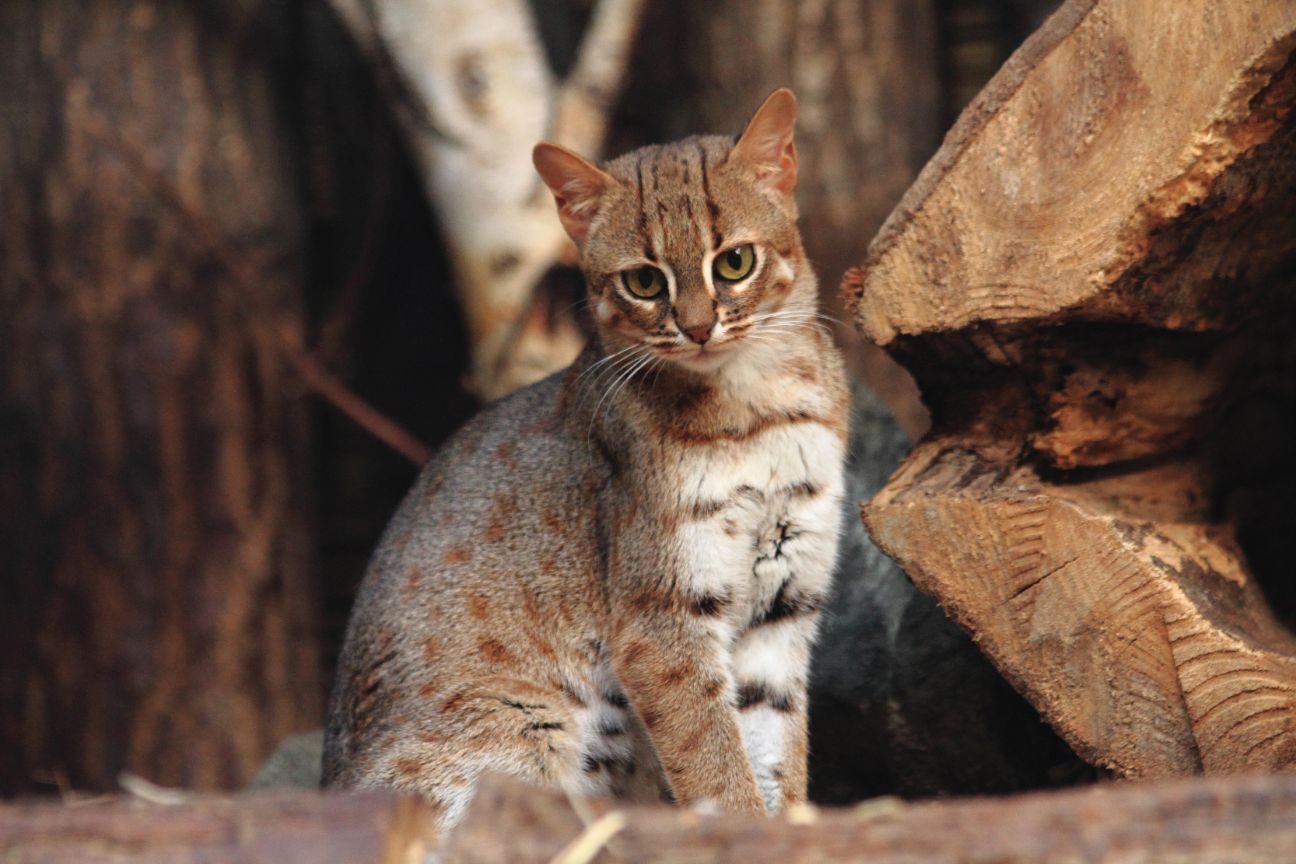
Captive Rusty-Spotted Cats are mostly nocturnal, but also briefly active during the day.
While it may be heartening to see that none of our wildcats are endangered, their populations are on a downward trend. Habitat loss is a big threat to these little cats along with poaching for bush-meat, pelts and black magic rituals.